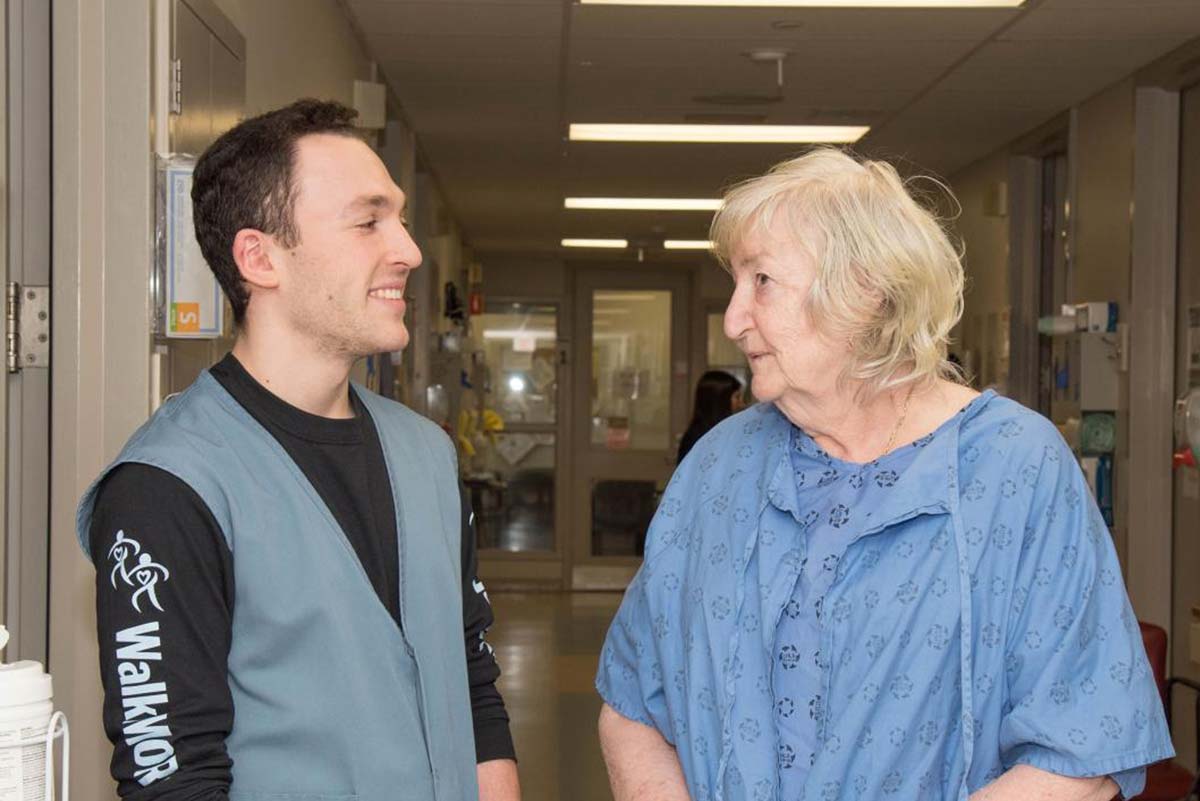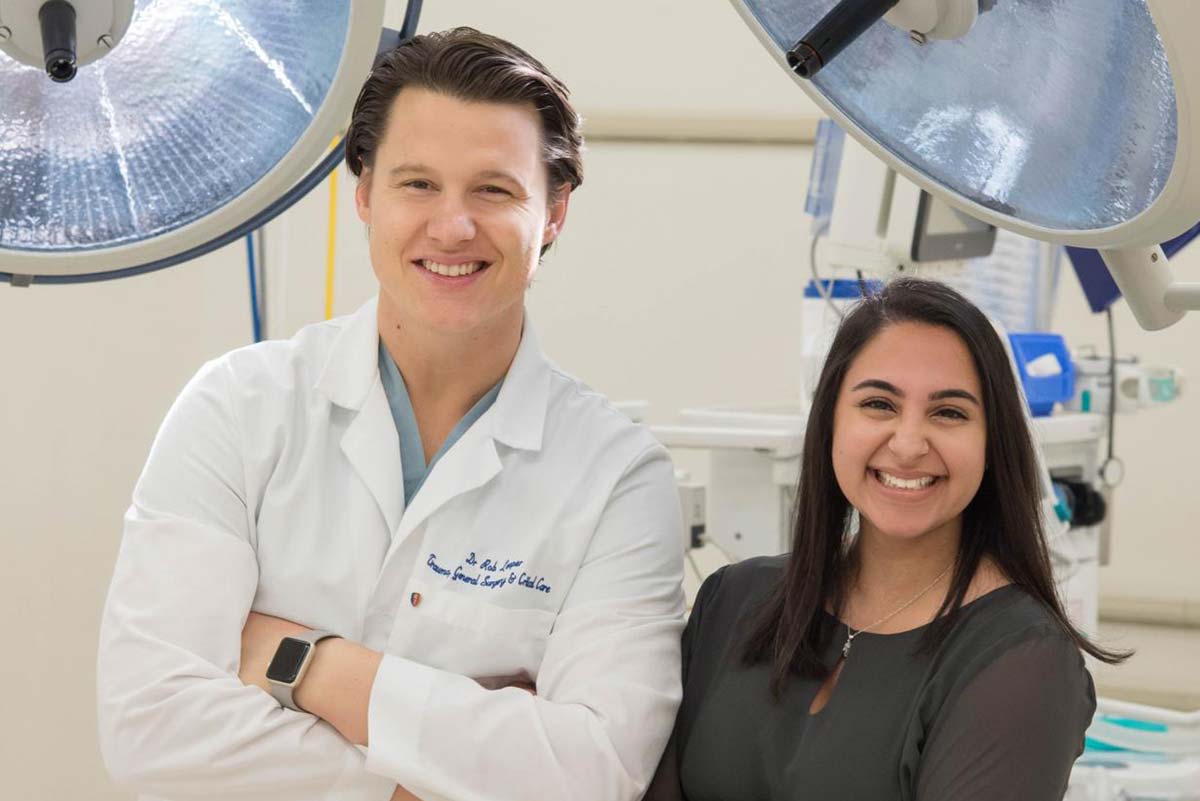Working at LHSC
What does it mean to be an academic health organization?
As an academic health organization, LHSC has a care, teaching and research mandate to fulfill. We provide acute care for the sickest patients and those requiring highly specialized treatment; we train more than 3,600 students each year - including student doctors, nurses, and health professionals such as social workers, speech language pathologists, psychologists and physiotherapists; and, through our research institute, we conduct leading-edge research to advance knowledge and care now and in the future.

What does it mean to be an academic health organization?
As an academic health organization, LHSC has a care, teaching and research mandate to fulfill. We provide acute care for the sickest patients and those requiring highly specialized treatment; we train more than 3,600 students each year - including student doctors, nurses, and health professionals such as social workers, speech language pathologists, psychologists and physiotherapists; and, through our research institute, we conduct leading-edge research to advance knowledge and care now and in the future.

Physicians, dentists and midwives 987 |
Residents, fellows and visiting electives 1,223 |
Medical students* 766 |
Technicians and technologists 925 |
Administrative and corporate professional 2,017 |
Service 1,243 |
Management 304 |
Allied health 605 |
Nurses 3,820 |
Non-medical students 690 |
Student nurses 864 |
Volunteers 850 |
*Senior medical students (3rd and 4th year) who receive training at LHSC throughout the year
Beds
WalkMore program helps keep patients mobile
If you don’t use it, you’ll lose it.
That’s certainly true for patients in hospital who are able to walk but don’t because of the misbelief that they either can’t or shouldn’t leave their beds.
Being immobile for any length of time is especially impactful on older adults who can lose muscle strength, balance and agility at a quicker rate than those who are younger.

WalkMore program helps keep patients mobile
If you don’t use it, you’ll lose it.
That’s certainly true for patients in hospital who are able to walk but don’t because of the misbelief that they either can’t or shouldn’t leave their beds.
Being immobile for any length of time is especially impactful on older adults who can lose muscle strength, balance and agility at a quicker rate than those who are younger.

University Hospital beds 424 |
Victoria Hospital beds 588 |
Children's Hospital beds 120 |
Bassinets 36 |
Patient Care
Saving Serena
When Serena Tejpar was brought into the trauma bay at LHSC’s Victoria Hospital, she was clinging to life.
The 18-year-old Western University medical sciences student had been involved in a serious collision on Highway 401 and, after being stabilized at Woodstock General Hospital, she was moved to London in an effort to save her from the critical injuries she had sustained.
The assessment of her injuries was extensive: sheared aorta; laceration to the bladder; broken pelvis, broken sacrum; brain bleed… the list goes on.

Saving Serena
When Serena Tejpar was brought into the trauma bay at LHSC’s Victoria Hospital, she was clinging to life.
The 18-year-old Western University medical sciences student had been involved in a serious collision on Highway 401 and, after being stabilized at Woodstock General Hospital, she was moved to London in an effort to save her from the critical injuries she had sustained.
The assessment of her injuries was extensive: sheared aorta; laceration to the bladder; broken pelvis, broken sacrum; brain bleed… the list goes on.

Emergency visits 165,824 |
Ambulatory visits 800,458 |
Admissions 55,371 |
Patient days 388,766 |
Avg. length of stay (days) 7.0 |
Births 5,724 |
Surgical Cases
Waking up to the sound of coffee
Imagine waking up not only to smell the coffee but also to hear the water gurgling through the coffee maker for the very first time. To hear people chattering at the mall, to hear the traffic rumbling up the street.
That became a reality for Laura Sitlington a few years ago, one that she was not born with.
Sitlington was referred to Dr. Sumit Agrawal, a skull base surgeon in the Department of Otolaryngology – Head & Neck Surgery at LHSC, to see what options were available to her.

Waking up to the sound of coffee
Imagine waking up not only to smell the coffee but also to hear the water gurgling through the coffee maker for the very first time. To hear people chattering at the mall, to hear the traffic rumbling up the street.
That became a reality for Laura Sitlington a few years ago, one that she was not born with.
Sitlington was referred to Dr. Sumit Agrawal, a skull base surgeon in the Department of Otolaryngology – Head & Neck Surgery at LHSC, to see what options were available to her.

Inpatient surgeries 17,456 |
Day surgeries 10,141 |
Diagnostic Testing
Creating a lab for tomorrow, today
Staffed 24 hours a day, seven days a week, the Core Laboratory at LHSC is one of the hospital’s busiest areas that patients never see. Performing roughly seven million tests citywide each year, this lab analyzes thousands of tests and specimens every day. Each one of those millions of tubes has an important story to tell, one that can help a physician make a diagnosis or guide a critical decision about patient care.

Creating a lab for tomorrow, today
Staffed 24 hours a day, seven days a week, the Core Laboratory at LHSC is one of the hospital’s busiest areas that patients never see. Performing roughly seven million tests citywide each year, this lab analyzes thousands of tests and specimens every day. Each one of those millions of tubes has an important story to tell, one that can help a physician make a diagnosis or guide a critical decision about patient care.

Diagnostic imaging 387,453 |
Laboratory tests* 6,866,402 |
Endoscopy 16,258 |
*2018 calendar year
Research and Innovation
Targeting the spread of cancer
When someone has cancer, one of the biggest fears is hearing these words: “the cancer has spread.”
When cancer spreads from an original tumour to other parts of the body, known as metastasis, it is generally considered incurable.
This long-held belief is now being challenged by researchers at Lawson Health Research Institute, the research institute of London Health Sciences Centre (LHSC). In an international study, researchers showed that high-dose radiation can improve survival in patients with cancer that has spread to five or less sites.

Targeting the spread of cancer
When someone has cancer, one of the biggest fears is hearing these words: “the cancer has spread.”
When cancer spreads from an original tumour to other parts of the body, known as metastasis, it is generally considered incurable.
This long-held belief is now being challenged by researchers at Lawson Health Research Institute, the research institute of London Health Sciences Centre (LHSC). In an international study, researchers showed that high-dose radiation can improve survival in patients with cancer that has spread to five or less sites.

Research personnel* (Lawson researchers, support staff, volunteers, students and fellows) 2,400 |
|
Total research funding* $123,255,000 |
Active research projects* 2,376 |
*Total number across LHSC and St. Joseph’s Health Care London
Statistics based upon data for the period April 1, 2018 to March 31, 2019 unless otherwise noted